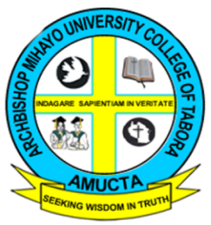Review of Research on Mobile Language Learning in Authentic Environments
This study reviewed literature on mobile language learning in authentic environments published from 2007 to 2016. Results showed that there was an increasing trend in publications. Students’ perceptions of mobile learning technologies and language proficiency were the most common research topics.
Authors: Rustam Shadiev, Wu-Yuin Hwang, & Yueh-Min Huang
Source: Shadiev, R., Hwang, W.-Y., & Huang, Y.-M. (2017) Review of research on mobile language learning in authentic environments, Computer Assisted Language Learning, 30(3-4), 284-303, DOI: 10.1080/09588221.2017.1308383
This study reviewed literature on mobile language learning in authentic environments published from 2007 to 2016. Results showed that there was increasing trend in publications. Students’ perceptions of mobile learning technologies and language proficiency were the most common research topics. The most frequently used technologies were smartphones, mobile phones, and personal digital assistants. Learning activities in most studies were conducted in classrooms and specified locations off campus. Authentic learning environments in most studies were familiar to students and learning activities were designed using an instructor-centred approach.
- Given that most people own mobile devices today, learning can be extended beyond a traditional classroom.
- Mobile technologies are reshaping learning and instruction by supporting, expanding, and enhancing course content, learning activities, and student interactions with instructors, peers, and learning content.
- An authentic environment (meaningful learning in contexts that involve real-world problems) is an important prerequisite for effective learning.
- Students are more inclined to learn as they apply new knowledge to solve daily real-life problems that they are likely to encounter frequently (as they occur in familiar, natural contexts).
- Scalability is the ability of language-learning programs to be adapted in a wide variety of contexts, whereas sustainability is the ability of language-learning programs to remain in use. Both are important for any language-learning program.
The study
This study focuses on mobile language learning in authentic environments.
Research questions:
- What were the trends regarding authentic mobile language learning in related literature from 2007 to 2016?
- What were research topics in the literature on authentic mobile language learning from 2007 to 2016?
- What mobile technologies were used in authentic mobile language-learning studies from 2007 to 2016?
- What methodologies were employed in authentic mobile language-learning studies from 2007 to 2016?
Methods
Research articles were searched using search terms such as mobile, language, learning, authentic, environment, and multimedia from several databases.
Findings
- An increasing trend of publishing articles on mobile learning in authentic environments was identified for the defined period.
- Most reviewed studies focused on exploring student perceptions of language learning in authentic mobile environments.
- Students had positive perceptions in most studies.
- This review showed that mobile language learning had a positive effect on student language proficiency in most studies.
- The most commonly used technology was smartphones.
- Students learned material in class first and then practiced their language skills outside of school.
- Learning supported by smartphones positively affected language proficiency; students who used smartphones had higher learning motivation and performed better compared to those who used other methods.
- Student using mobile phones outperformed the control group in language proficiency.
- The most common target language in reviewed publications was English as a foreign language (EFL); English is currently the most popular language and EFL learners lack an authentic learning environment in which to learn their target language; mobile technologies offer great potential to overcome this limitation.
- The most common research subject group was university students; one reason for this was they were most likely to possess their own mobile devices.
- All reviewed studies created authentic learning environments; however, they were created at various locations.
- A student-centred approach will enable real authentic learning environments to be built: students will visit places of interest, actively learn content that is meaningful to them, and solve daily real-life problems; accordingly, they will be able to learn a language by creating their own content.
- Most studies adopted both qualitative and quantitative methodologies; however, not many studies tested their approaches by designing experiments and analysing quantitative data.
- Future studies should assess the EFL proficiency of students who learn with mobile technologies and compare it with students who learn without technology. Future researchers should also collect data based on psycho-physiological measures.
- In terms of scalability, most reviewed studies conducted short-term learning activities with small sample sizes using the instructor-centred approach. With a student-centred approach, students demonstrated greater flexibility to explore locations according to their interests and create their own content.
- Long-term studies are needed with more participants who have greater flexibility to learn in authentic environments.
- A student-centred approach can be useful in terms of sustainability of learning activities supported by mobile technologies.
- It is suggested that a unified online learning platform for authentic learning needs to be created; such a platform will enable any students (or instructors) to enter and create and share content with others from the same (or different) school or to access content created by others.
- Google Maps or other similar services can be used as a learning platform for language learning.
- It is also suggested that learning in authentic environments should not be limited to one particular subject; when students visit authentic learning environments off campus to learn their target language, they may also learn other subjects such as science and practice related skills.















